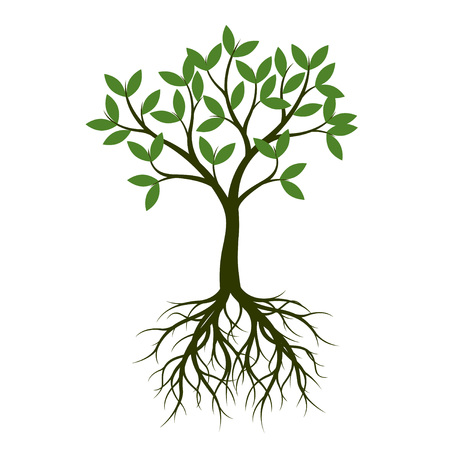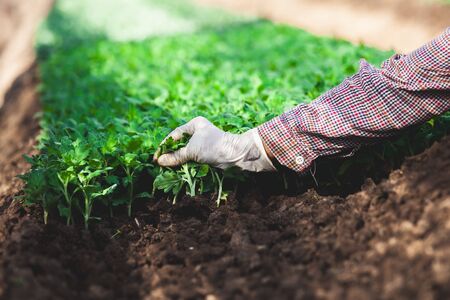Recognizing Heat-Related Plant Diseases
As temperatures soar during the hot summer months, certain plant diseases become far more prevalent and aggressive. Recognizing these heat-related plant problems early is key to protecting your garden or landscape. Look for visual symptoms such as wilting leaves even when soil is moist, yellow or brown patches on foliage, and black or gray spots that rapidly spread across leaves and stems. Pay special attention to powdery mildew, which often appears as white, powdery blotches on leaf surfaces, and blight diseases that can cause sudden browning or shriveling of entire sections of plants. Early warning signs may also include stunted growth, leaf curling, and an overall unhealthy appearance despite regular watering and care. By staying alert to these symptoms and knowing what to look for, you can act quickly to prevent disease from spreading and damaging your plants during the hottest part of the year.
Best Watering Practices for Hot Weather
Proper watering is one of the most important factors in managing plant health during the hot season. Both overwatering and underwatering can create the perfect conditions for diseases to take hold. During the hottest weeks, plants face extra stress, which can make them more vulnerable to fungal infections, root rot, and wilting. Understanding how to adjust your watering habits is essential for preventing these problems.
How Heat Impacts Water Needs
High temperatures cause water to evaporate more quickly from both soil and plant leaves. This means that your regular watering schedule may not be effective during a heatwave. However, simply increasing the frequency or amount of water can backfire, leading to soggy soil and increased risk of disease. Instead, it’s about finding a balance based on your specific plant types and local weather conditions.
Key Watering Guidelines
| Tip | Why It Matters |
|---|---|
| Water Early in the Morning | This reduces evaporation loss and gives plants time to absorb moisture before midday heat. |
| Avoid Wetting Leaves | Keeping foliage dry helps prevent fungal diseases like powdery mildew and leaf spot. |
| Check Soil Moisture First | Use your finger or a moisture meter to determine if watering is needed rather than following a set schedule. |
| Deep, Infrequent Watering | Encourages deep root growth and reduces surface-level disease risk. |
| Mulch Around Plants | Helps retain soil moisture and protects roots from temperature extremes. |
Signs of Overwatering vs. Drought Stress
| Overwatering Symptoms | Drought Stress Symptoms |
|---|---|
| Yellowing leaves, mushy roots, fungus gnats present | Wilting, dry or crispy leaves, slow growth |
| Soggy soil even hours after watering | Sandy or cracked soil surface |
| Mold or algae growth on soil surface | Brittle stems or leaf edges turning brown |
By staying alert to these signs and adjusting your watering routine accordingly, you can help your plants stay healthy and resilient even during the hottest part of the year.

3. Improving Airflow and Sun Exposure
During the hot season, creating the right environment for your plants is essential to prevent the spread of common diseases. Fungal and bacterial infections thrive in damp, stagnant conditions. By optimizing airflow and sunlight, you give your plants a healthier space to grow and drastically reduce the chances of disease taking hold.
Space Plants Appropriately
One of the simplest ways to boost airflow is to avoid overcrowding. When planting, make sure there’s enough space between each plant according to its mature size. This allows air to circulate freely, drying off excess moisture on leaves and stems. If you notice your garden has become too dense, consider thinning out some plants or trimming back overgrown branches.
Prune Regularly
Regular pruning not only shapes your plants but also removes dead or diseased foliage that can harbor pathogens. Trim lower leaves or branches that touch the soil, as these are most susceptible to splashing water and soil-borne diseases. For shrubs and trees, open up the canopy by selectively removing inner branches, which lets more sunlight reach all parts of the plant.
Choose the Right Location
When possible, position your plants in areas that receive morning sun. Early sunlight helps dry off dew quickly, which is especially important in humid summer months. Avoid planting directly under large trees or structures that block air movement and trap humidity.
Utilize Garden Supports
Trellises, stakes, and cages aren’t just for keeping vines upright—they also help keep foliage off the ground and spaced apart. This improved structure ensures better air movement around leaves and stems, making it harder for diseases to take hold.
By consistently managing airflow and maximizing sun exposure, you create an environment where healthy growth thrives and common hot-season diseases have less opportunity to develop.
4. Safe Use of Fungicides and Natural Remedies
When hot weather hits, plant diseases can spread quickly, making it essential to choose the right treatment options that are both effective and safe for your garden environment. Whether you’re managing powdery mildew, blight, or leaf spots, understanding the difference between chemical fungicides and organic remedies will help you control outbreaks without harming beneficial insects or pollinators.
Choosing Garden-Safe Fungicides
Always look for fungicides labeled as “garden-safe” or “organic-approved” if you want to protect edible crops or avoid harming wildlife. Products containing copper, sulfur, or neem oil are popular choices in the U.S., but remember to read labels carefully and follow all safety instructions. Apply treatments early in the morning or late in the evening to avoid leaf burn during peak heat.
Common Fungicides & Their Uses
| Fungicide Type | Best For | Safe For Edibles? |
|---|---|---|
| Copper-based | Bacterial & fungal diseases (e.g., blight) | Yes (follow dosage instructions) |
| Sulfur-based | Powdery mildew, rusts | Yes (apply in cool temps) |
| Neem Oil | Mildews, black spot, aphids | Yes (wash produce before eating) |
Organic Treatments and Home Remedies
If you prefer a natural approach, there are several homemade solutions that can help prevent and treat common plant diseases during summer:
- Baking soda spray (1 tbsp baking soda + 1 gallon water) for powdery mildew
- Diluted milk spray (1 part milk to 9 parts water) to boost leaf defenses
- Compost tea to promote beneficial microbes on plant surfaces
Application Tips for Safety & Effectiveness
- Avoid spraying during the hottest part of the day to reduce stress on plants
- Test any new remedy on a small area first to check for adverse reactions
- Reapply treatments after rain or irrigation for continued protection
By combining careful selection of fungicides with proven organic methods, you can safely manage plant disease outbreaks and keep your garden thriving all summer long.
5. Cleaning and Rotating Your Garden
Good garden hygiene is one of the most effective ways to reduce plant diseases, especially during the hot summer months when pathogens thrive. Start by regularly removing any dead or diseased leaves, stems, and fruit from your garden beds. Don’t compost infected plant material—bag it up and dispose of it in the trash to prevent disease from spreading. Wash your gardening tools with a diluted bleach solution after use to avoid carrying pathogens from one area to another.
Another smart strategy is crop rotation. If you grow the same type of plants in the same spot year after year, soil-borne diseases can build up and hit your crops hard. Each season, switch up where you plant your tomatoes, peppers, squash, and other vegetables. Rotating crops breaks the life cycle of common pathogens and keeps your soil healthier overall. Consider dividing your garden into sections and following a three- or four-year rotation plan for best results.
By combining regular cleanup with strategic planting practices, you’ll make it much harder for disease to take hold—even when summer heat puts extra stress on your plants. These simple habits go a long way toward keeping your garden productive all season long.
6. When to Seek Professional Advice
Sometimes, despite your best efforts, plant diseases can persist or even worsen during the hot season. If youve tried all the recommended strategies—like proper watering, using disease-resistant varieties, improving air circulation, and applying organic or chemical controls—but you still see symptoms spreading, it may be time to seek expert help. Dont hesitate to reach out to your local county extension office; theyre staffed with horticulture experts who are familiar with plant issues common in your specific region and climate. These professionals can help you correctly identify the problem and recommend advanced treatment options tailored for your area. You might also consider consulting a certified arborist or plant pathologist if the plants affected are valuable trees or ornamentals. Remember, catching a disease early and getting the right advice can save your garden—and sometimes even prevent the spread of issues to neighboring yards. If youre unsure whether its time for professional assistance, look for signs like rapid wilting, unexplained dieback, or if multiple types of plants are suddenly affected. In these cases, expert guidance can make all the difference in preserving your plants through the toughest summer months.


